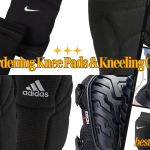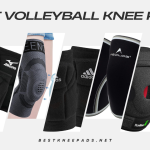Participating in contact sports comes with inherent risks, including the possibility of sustaining injuries. However, with the right knowledge and safety measures, individuals can still enjoy contact sports while minimizing the risk of harm. Even those who prioritize safety can still experience injuries, which is why understanding the nature of these injuries and adopting preventative measures is crucial.
Key Takeaways
- Participating in contact sports carries inherent risks, including the possibility of injury.
- Individuals who prioritize safety can still experience injuries in contact sports.
- Understanding the nature of injuries sustained in contact sports and implementing safety precautions can help reduce the risk of harm.
- Proactive steps such as proper equipment usage, training techniques, and rule adherence can help minimize the risk of injuries in contact sports.
- Recovery and rehabilitation are crucial components of injury management, and individuals invested in contact sports should prioritize them to bounce back stronger.
Common Injuries in Contact Sports
Despite prioritizing safety, athletes who engage in contact sports frequently face injuries that can be debilitating and harmful to their long-term health. Here are some of the most common injuries encountered in contact sports:
- Concussions: A traumatic brain injury caused by a blow to the head, leading to a temporary loss of brain function.
- Sprains and Strains: Twisting or stretching a joint or muscle beyond its limit, leading to pain, swelling, and inflammation.
- Bruises: Occur when the body experiences blunt force trauma that damages blood vessels, leading to discoloration of the skin.
- Cuts and Scrapes: Open wounds that result from contact with rough surfaces, equipment, or other players.
- Fractures and Dislocations: Caused by sudden, forceful impacts that result in broken bones or joints.
It is crucial for athletes to understand the causes and effects of these injuries to take proactive steps and mitigate the risks.
Safety Measures and Prevention Strategies
When it comes to contact sports, safety should always be a top priority. While injuries can still occur even with the best of intentions, there are several safety measures and prevention strategies that can help minimize the risk of harm.
Proper Equipment Usage
One of the most crucial aspects of safety in contact sports is the use of proper equipment. Athletes should always wear helmets, pads, and other protective gear that is appropriate for their sport. It is essential to ensure that the equipment is in good condition, fits well, and is worn correctly to maximize its effectiveness in protecting against injuries.
Training Techniques
Athletes should also be well-trained in proper techniques and form to minimize the risk of injury. Coaches and trainers should emphasize the importance of practicing good form and safe techniques, especially during high-impact moves like tackles or jumps. Athletes should also be taught how to fall safely to minimize the impact of a fall or collision.
Rule Adherence
Rules and regulations in contact sports are designed to keep athletes safe and minimize the risk of injury. Athletes should be familiar with the rules of their sport and adhere to them strictly. This includes avoiding dangerous moves or plays that could result in harm to themselves or other players.
Injury Prevention Strategies
Some athletes take additional steps to minimize the risk of injury, such as cross-training or incorporating stretching and strengthening exercises into their routine. It is also important to listen to your body and take breaks when necessary to avoid overuse injuries.
By implementing these safety measures and prevention strategies, athletes can enjoy contact sports while minimizing the risk of harm. Remember, safety should always come first, even in the heat of competition.
Statistics and Trends in Contact Sports Injuries
Statistics related to contact sports injuries reveal valuable insights that are crucial for safety-conscious individuals. According to a recent study, approximately 1.6 to 3.8 million sports-related concussions occur every year in the United States. Furthermore, contact sports account for approximately 70% of all sports-related emergency room visits among children aged 5 to 14 years.
Trends in contact sports injuries show that certain sports are more prone to injuries than others. For instance, football is responsible for the highest number of injuries, followed by basketball, soccer, and baseball/softball. Additionally, research has shown that females are more likely to sustain a concussion than males in similar sports.
Another trend in contact sports injuries is the seasonality of injuries. Most injuries occur during the regular season, with more injuries recorded during games than in practice sessions. Furthermore, contact sports injuries are more likely to occur in the second half of a game than in the first half.
Tracking statistics and trends in contact sports injuries is essential to develop effective injury prevention strategies. By analyzing data, safety-conscious individuals can learn from past mistakes and develop a proactive approach to minimize the risk of injuries in the future.
Pros:
- Boost Physical Fitness
- Foster Team Building
- Develop Mental Toughness
Cons:
- Increased Injury Risk
- Potential Long-term Effects
- Time Commitment Challenges
Neutral Points:
- Emphasis on Proper Training
- Importance of Quality Equipment
- Access to Timely Medical Support
Recovery and Rehabilitation Tips
Recovering from injuries sustained in contact sports can be a daunting task. However, with the right approach, an individual can regain their strength and return to the sport they love. Here are some recovery and rehabilitation tips to help:
- Rest and Recovery: One of the most important steps in recovering from injuries is to prioritize rest and recovery. Adequate rest allows the body to heal and restores its strength and energy levels. It is essential to listen to your body and give it the rest it needs.
- Physical Therapy: Many athletes find significant value in working with a physical therapist during their recovery process. A physical therapist can help create a personalized plan tailored to an individual’s specific injury. They can also provide guidance on stretching and strengthening exercises to improve range of motion and reduce pain.
- Proper Nutrition: Eating a well-balanced diet rich in nutrients can play a vital role in the recovery process. Proper nutrition can supply the body with the energy and nutrients it needs to mend itself. Aim to consume lean proteins, whole grains, and plenty of fruits and vegetables to aid in the recovery process.
- Gradual Return: When an individual is ready to return to their sport after an injury, it is crucial to do so gradually. Rushing back into activity can cause further harm and delay the healing process. Start with light activities and gradually increase the intensity over time.
- Mental Health: Recovering from an injury can be a mentally challenging process. It is essential to prioritize mental health and seek support when necessary. Speaking with a mental health professional can help an individual manage any stress, anxiety, or depression that may arise during the recovery process.
By following these recovery and rehabilitation tips, individuals can get back to their contact sports safely and confidently. Remember to always prioritize safety and listen to your body throughout the recovery process.
Conclusion
For those passionate about contact sports, prioritizing safety is crucial to continue enjoying the sport without jeopardizing their well-being. By exploring the world of injuries in contact sports and understanding the measures that can be taken to prevent them, individuals can take meaningful steps towards minimizing the inherent risks.
From common injuries such as sprains and concussions to more severe cases like broken bones and internal injuries, it is essential to prioritize safety measures and preventative strategies. This includes wearing proper equipment, adhering to the rules of the game, and utilizing training techniques that emphasize safety as a top priority.
As we have seen, statistics and trends in contact sports injuries highlight the importance of being proactive in minimizing risks. By adopting injury prevention strategies and emphasizing recovery and rehabilitation efforts, athletes can bounce back stronger than ever from injuries.
In conclusion, the world of contact sports presents inherent risks, but by taking meaningful steps to prioritize safety and recovery, individuals can continue enjoying the sport while minimizing the risk of harm.










